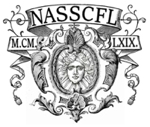Following classic distinctions between 'periodical' and 'book,' LeNoble's Promenades (~1695-~1699, counterfeited later), striving for regular distribution and wide dissemination that might create networks of knowledge transcending space, seems a periodical. LeNoble's stories have many journalistic marks (regularity, references to immediate events; emerging knowledges, contemporary figures like censors, inspectors; and such heterogeneous content as dialogue, billets, and cartography). But most strikingly "literary" is their socio-spatiality: the Promenades' nouvelliste is not just a recorder of others' events, but an embodied spectator and witness himself (himselves), culling, adjudicating, and interpreting what occurs in the Tuileries. If the Promenades' geo-spatial dimensions are a significant “dead end” in the history of periodicals, their anti-literary, faddish currency a significant “dead end” in the history of literature.
|
The Embodied Nouvelliste: The Spatiality of Eustache Le Noble's _Promenades_
1 : University of Minnesota - Twin Cities
(UMN)
-
Site web 314 Folwell Hall, Minneapolis MN 55455 -
États-Unis
|
| Personnes connectées : 1 | Flux RSS |

|

 PDF version
PDF version